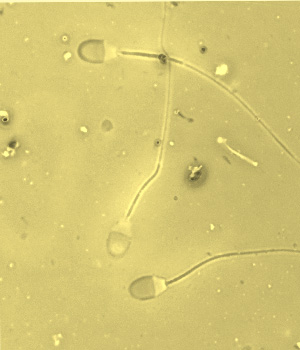All for one and one for all
Some scientific thoughts on the adventure of sperm
Spermatozoa (commonly referred to as sperm) are constantly produced in very large numbers by the male reproductive system and they all have a common purpose: the fertilization of the oocyte.
Sperm are the only cells in mammals, including humans, designed to travel outside the body of origin, namely along the female reproductive tract, to achieve their goal. In mammalian species, billions of sperm are present in a single ejaculate; however, only few of them will reach the fertilization site and only one will fertilize the oocyte. Throughout their trip to meet the oocyte, sperm exhibit a remarkable altruistic attitude. Vast numbers of sperm 'sacrifice' themselves by forming a collaborating network that supports the march of a few brother sperm towards the fertilization site to enhance / and thus enhances their chances to fertilize the oocyte.
The functional status of sperm, as well as their capacity to produce a viable offspring, is a major field of reproductive medicine. In order to determine sperm fertilizing capacity, clinicians and researchers follow an analytical approach. In an attempt to detect potential causes of male infertility, scientists assess different functional parameters of a representative number of single sperm cells and evaluate them one at a time. To reach a decision about the fertilizing capacity of the examined ejaculate, they put the pieces of information back together and express the results of this synthesis as the probability that the male is fertile.
Dr. Eleni Malama is a postdoc researcher at the Laboratory of Andrology of the Clinic of Reproductive Medicine at the Vetsuisse Faculty of the University of Zurich More
Related contributions
